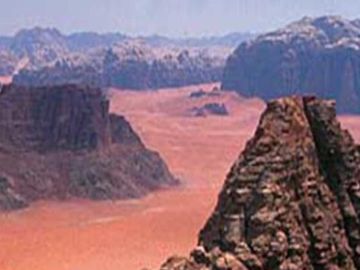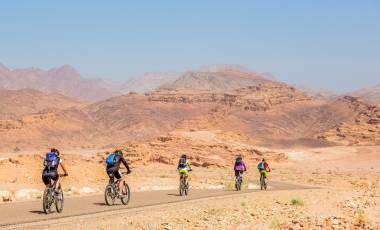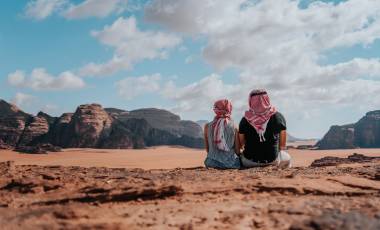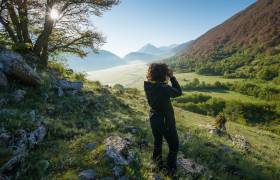Read time – 3 minutes
The small dot wheeling above me was a steppe buzzard. I only knew that because Mr Nabil had pointed one out earlier that day.
Passing high to my left, it had appeared from over the red mountain to the south, which although looked close enough to touch, was actually 25 miles away across the Saudi Arabia border.
The red mountain, or jebel, sat close to the tri-point with Iraq. Steppe buzzards migrate through this region each spring, taking months to fly from their wintering ground in Sudan all the way to summer nests in Bosnia and Ukraine.
As I sat here, high on Jebel Burdah, there wasn’t a sound from the valley below or any hint of movement. With no desert trees to sway in the wind, you can quickly lose your sense of perspective.
 Footprints in the desert sand
Footprints in the desert sand
History of Jordan
Jordan has been a crossing ground for millennia. From the ancient Nabatean tribes, through Roman settlement, a myriad of Jewish and Arab conquests and centuries of Ottoman rule, it has seen its fortunes shift like sand, from century to century.
Officially known as the Hashemite Kingdom of Jordan since 1946 when the British mandate finally ended, recent years have seen travellers rediscovering this desert country.
Wadi Rum Desert
We were spending a week trekking through Wadi Rum, a dramatic desert wilderness covering 700 square kilometres in the south of the country. The land here is crisscrossed with wide sandy valleys, dramatic gorges and huge stand-alone mountains of sandstone and granite.
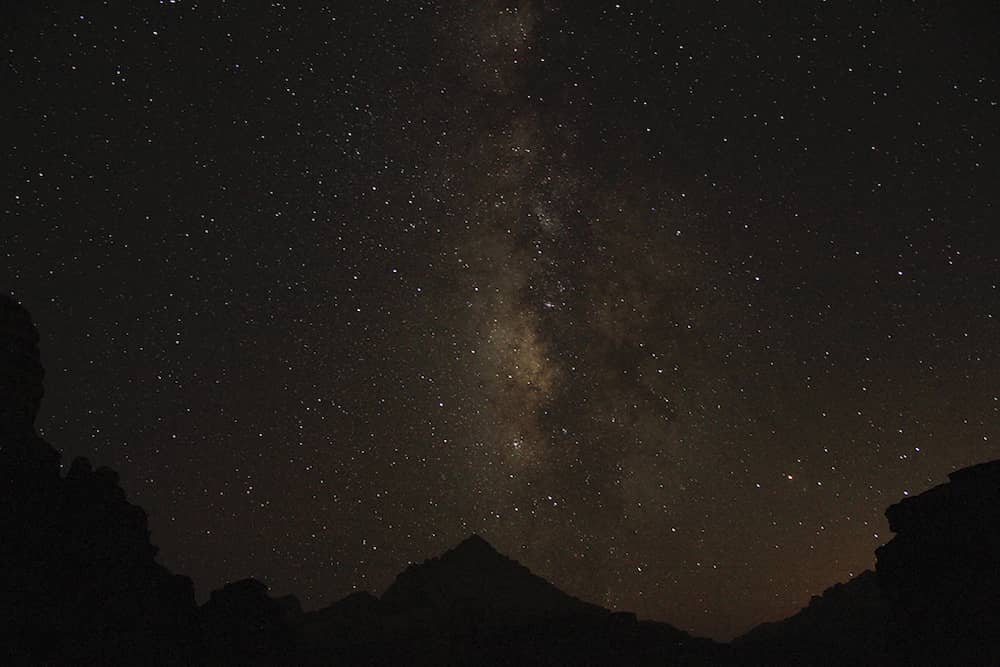 Desert sky at night
Desert sky at night
Recently added to the prestigious UNESCO World Heritage List, its silent corridors and peaks have played host to a surprising array of historical events. Leaving our jeep and driver, the track from Disseh village gradually petered out until we found ourselves trekking slowly up the side of an immense dune, deep in a featureless sand sea.
The sun was hot but a light wind blowing across the plain made it bearable. The sand was soft and undulating and the stiff pace we started with gradually slowed.
I ask Mr Nabil where we are headed and he shouts: “Umm el Twaggy!” He laughs and rubs his wide belly. “The Bedouin food there is fantastic and Mr Jusuf – what a host!”
Many Bedouin tribes still live here in the Arabian Desert, crossing borders unnoticed as they follow their flocks of sheep, goats and camels through the seasons. Their large black, goat hair tents still dot the landscape, sometimes shimmering far in the distance through the heat.
Camping in the Desert
We were staying in one such tent tonight. Of course, Mr Nabil was right – he’s been here many times before. The food was fantastic and Mr Jusuf was as good a host. After a dinner of roast chicken, rice, vegetables and hot sweet tea, the music started and eight rather stiff British tourists spent the night laughing in the tent until bedtime.
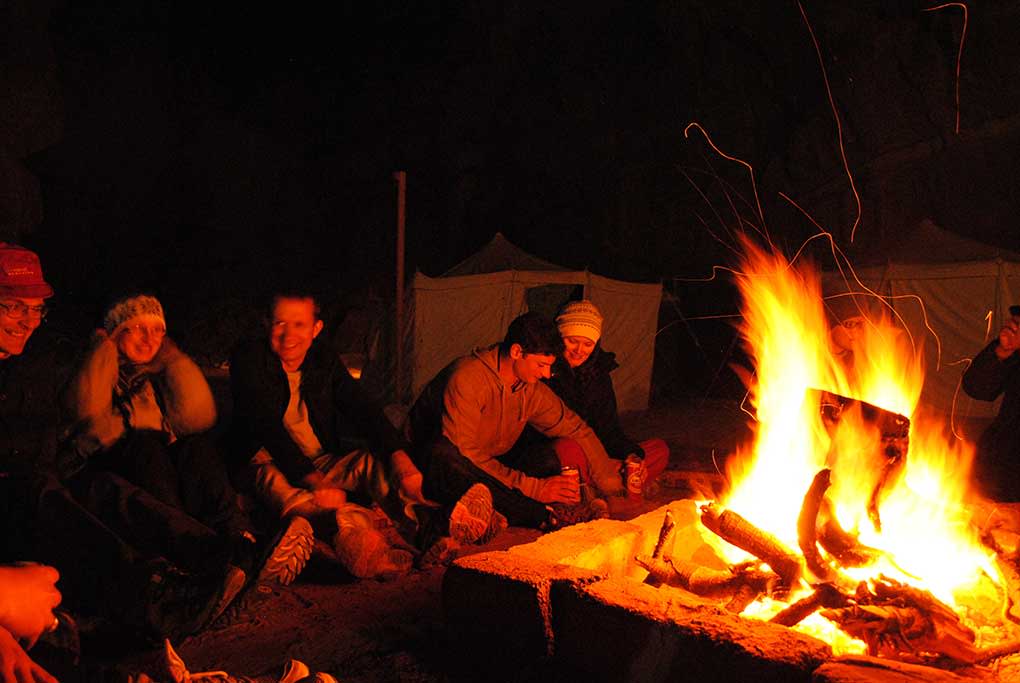 Campfire in the desert
Campfire in the desert
Before turning in, I took a walk out from the camp, the moon above filling the valley floor with milky light. The camp is built into a sandy hollow and the dying campfire flickered over the red walls above the tents. I stared out across the plateau and heard only faint laughter from the camp behind me.
The next five days took us into the heart of Wadi Rum, where its history flowed strongest. Through the awe-inspiring gorge of Siq el Barrah, we followed our guide across sand-swept plains, over rock bridges 100 feet high and on to the Khazali and Burrah canyons.
Each night the hot sunsets settled over the land, turning the mountains a fiery red, slowly fading to black as night drew in. A desert always surprises with its hidden beauty and each day took us somewhere new and exciting. Every evening we set up our tents, although pulling your sleeping bag around the campfire quickly became the preference.
Mr Nabil told us Bedouin stories by lamplight, taking us through the complex history of the region, all the time his shadow dancing on the rocks above us. We visited the house where T.E. Lawrence hid guns while engineering the Arab revolt in 1917, now sitting alone and crumbling in the desert wind at the junction of two wide valleys.
We were also close to where the armies on camelback massed for the overland attack and conquest of Aqaba. Days later, after what felt like weeks, we finally emerged from a narrow valley and found our 4×4 waiting for us on the crest of a hill.
It seemed somehow incongruous but we piled in laughing and as we drove away, watched the red mountains shrinking with every mile. Wadi Rum sits quietly in the Arabian Desert and the history of Jordan is never far away, lying just beneath the sand. – By Brendan Phelan, Head of Customer Operations
See our trips below and go trekking in Wadi Rum.
